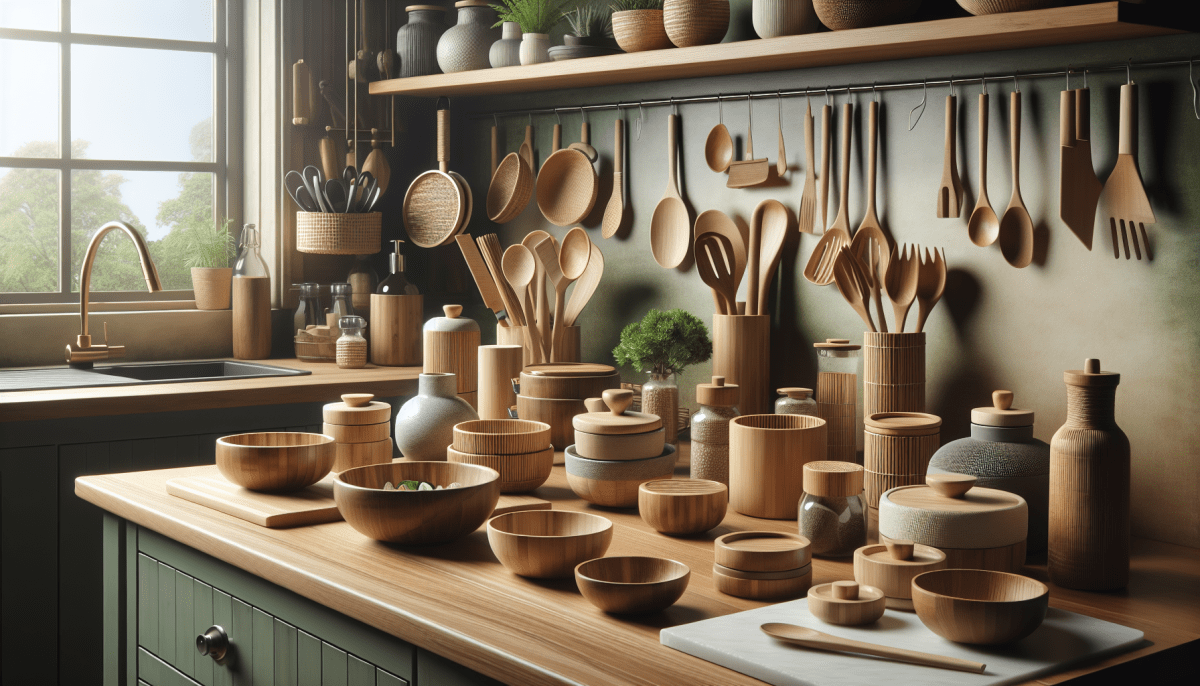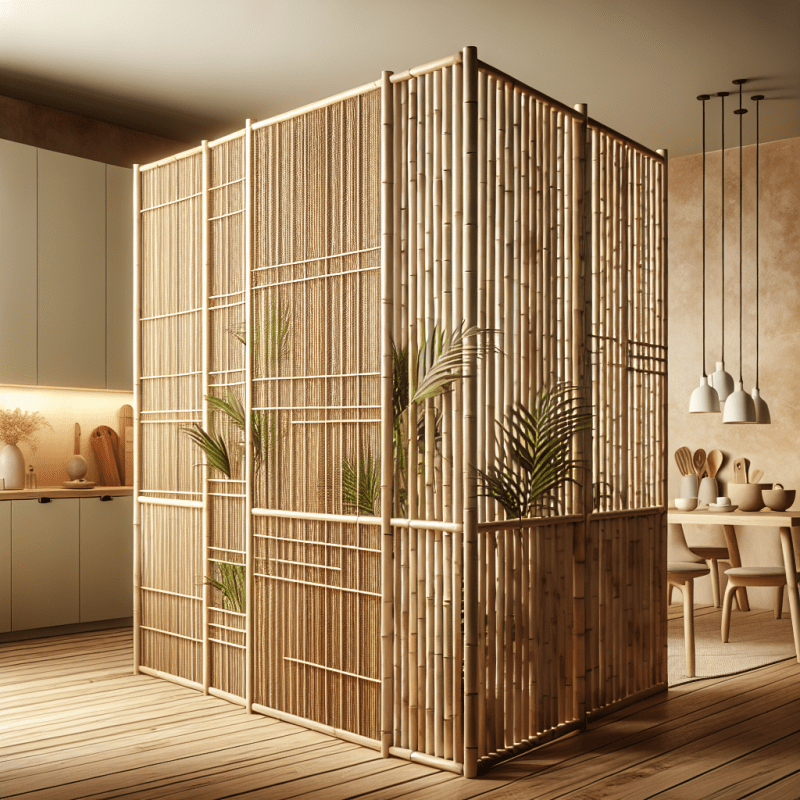From Chopsticks to Cutting Boards: Tracing the Evolution of Bamboo in Kitchenware
Bamboo, a versatile and sustainable material, has been an integral part of kitchenware for centuries. Its use has evolved, adapting to different culinary practices and technological advancements. From humble chopsticks to modern cutting boards, let's delve into the fascinating journey of bamboo in kitchenware.
Origins and Early Uses
Bamboo has been cultivated and utilized in Asia for thousands of years. In ancient China, bamboo chopsticks emerged as a practical alternative to traditional utensils made of costly metals. The lightness and durability of bamboo made it easier to handle food, leading to its widespread adoption as an eating utensil across East Asia.
As civilizations advanced, so did bamboo's role in kitchenware. Its natural anti-microbial properties were discovered, making it a perfect material for food storage. Bamboo baskets and containers provided a breathable environment, keeping fruits and vegetables fresh for longer periods.
Innovation & Adaptation
The use of bamboo expanded as culinary practices evolved. In Japan, the delicacy and precision required in sushi-making led to the development of bamboo sushi mats or makisu. These mats allowed chefs to roll sushi tightly and shape it perfectly. Bamboo became an essential tool for sushi chefs and remains so to this day.
With the emergence of new cooking techniques and the spread of international cuisines, bamboo's versatility came to the forefront. Steaming food gained popularity, and bamboo steamers became a preferred method for both professionals and home cooks. The porous texture of bamboo allowed steam to circulate evenly, making it ideal for cooking rice, dumplings, and vegetables.
Modern Kitchenware
Bamboo has recently seen a resurgence in kitchenware, fueled by its eco-friendly properties. Concerns about deforestation and environmental conservation led to a shift towards sustainable materials. Bamboo, being one of the fastest-growing grasses, requires no replanting after harvesting, making it an environmentally sound choice.
Bamboo cutting boards have gained popularity due to their durability, hardness, and resistance to knife marks. They are also more hygienic than traditional wooden cutting boards, as bamboo's natural anti-microbial properties help prevent the growth of bacteria.
Bamboo utensils, such as spoons and spatulas, have also become popular alternatives to plastic or metal options. The lightweight nature of bamboo makes them easy to handle and gentle on non-stick cookware.
The Future of Bamboo
As we prioritize sustainable choices in our kitchens, bamboo is expected to continue its evolution in kitchenware. We may witness further developments with ongoing research and innovation, such as bamboo-based kitchen appliances or even more advanced bamboo composite materials.
From its humble beginnings as chopsticks to its prominent role in modern kitchenware, bamboo has proven to be a versatile and environmentally friendly material. As we move towards a more sustainable future, bamboo will remain a beloved and essential staple in our culinary endeavors.
Harnessing the Versatility of Bamboo: A Journey through Innovative Kitchenware
Bamboo, a versatile plant known for its strength and sustainability, has been a fundamental material in various industries for centuries. In recent years, it has gained significant popularity in the kitchenware industry due to its unique properties, making it an excellent choice for eco-conscious consumers. From cutting boards to utensils, bamboo has revolutionized the way we prepare and serve our meals. Let's take a closer look at some of the innovative bamboo kitchenware products that have taken the culinary world by storm.
Bamboo Cutting Boards:
Cutting boards are essential in every kitchen, and bamboo cutting boards have become a top choice for chefs and home cooks alike. The natural density of bamboo makes it highly resistant to knife marks, ensuring a durable and long-lasting cutting surface. Additionally, bamboo is naturally antibacterial, making it a hygienic option for food preparation. Its lightweight nature allows for easy handling, making it a hassle-free addition to any culinary journey.
Bamboo Utensil Sets:
Gone are the days of plastic utensils that harm the environment. Bamboo utensil sets have emerged as a sustainable alternative in kitchens worldwide. These sets come with an array of essential utensils such as spoons, spatulas, and tongs. Bamboo utensils are not only environmentally friendly but also lightweight, heat-resistant, and gentle on cookware, making them a perfect fit for any culinary adventure.
Bamboo Steamers:
A staple in many Asian cuisines, bamboo steamers are gaining immense popularity among cooking enthusiasts. These traditional bamboo steamers offer a healthier way of cooking by preserving the ingredients' natural flavors and essential nutrients. The porous nature of bamboo allows for an even distribution of steam, ensuring that the food retains its freshness and texture. Bamboo steamers are functional and add an authentic touch to any kitchen.
Bamboo Bowls and Serving Trays:
When it comes to serving food, bamboo bowls and serving trays have become a go-to choice for those seeking an elegant and eco-friendly presentation. Bamboo bowls are not only aesthetically pleasing but also lightweight and durable. They are perfect for serving salads, pastas, or even as decorative fruit bowls. Bamboo serving trays, with their natural warmth and beauty, add a touch of sophistication to any dining occasion.
Bamboo Storage Containers:
Gone are the days of plastic food storage containers that wear out easily and harm the environment. Bamboo storage containers are slowly but surely making their way into kitchens across the globe. These containers offer a sustainable and aesthetically pleasing solution for storing dry goods, herbs, or even leftovers. With their airtight lids and eco-friendly properties, bamboo storage containers contribute to a greener kitchen.
In conclusion, the versatility of bamboo continues to amaze us, as it finds its way into our kitchens as innovative and sustainable kitchenware. Bamboo has become a favorite material among culinary professionals and home cooks, from cutting boards to steamers and storage containers. As we strive for a greener future, bamboo is an invaluable ally in revolutionizing how we cook, serve, and store our food.
Eco-friendly Advancements: How Bamboo has Revolutionized Kitchenware Design
Over the past decade, there has been a growing interest in sustainable and eco-friendly alternatives in various industries. As people become more conscious of the environmental impact of their choices, bamboo has emerged as a game-changer in kitchenware design. This versatile and renewable resource has revolutionized the way we perceive and use everyday kitchen tools.
Traditionally, kitchenware was predominantly made from plastic, metal, or wood. However, these materials often come with downsides in terms of sustainability, durability, or aesthetics. Here is where bamboo steps in, offering a multitude of advantages that have made it a sought-after material in kitchenware design.
1. Sustainable and Renewable
One of the key reasons behind bamboo's popularity in kitchenware design is its sustainability. Bamboo is a fast-growing grass that can reach maturity in just a few years, compared to the decades required for trees. Moreover, bamboo can be harvested without killing the plant, as it regenerates from its base. This incredibly renewable quality makes bamboo an excellent alternative to hardwoods, reducing deforestation and promoting environmental conservation.
2. Exceptional Durability
Contrary to its delicate appearance, bamboo is incredibly durable and long-lasting. Products made from bamboo are known for their strength and resistance to cracking, warping, or splintering. This makes bamboo kitchenware a reliable choice that can withstand the rigors of daily use for years.
3. Natural Antibacterial Properties
Bamboo possesses natural antibacterial and antimicrobial properties that enhances its suitability for kitchenware. The bamboo fibers contain a bio-agent called "bamboo kun," which prevents the growth of bacteria and fungi. As a result, bamboo kitchenware is hygienic and safe to use, reducing the risk of cross-contamination during food preparation.
4. Aesthetic Appeal
Bamboo kitchenware offers a unique and elegant aesthetic that adds a touch of sophistication to any kitchen. The natural grain patterns and warm colors of bamboo create a visually appealing and organic look. By incorporating bamboo utensils or cutting boards, you can effortlessly elevate the overall ambiance of your culinary space.
5. Versatility and Functionality
Bamboo's versatility makes it ideal for various kitchenware applications. It creates a wide range of products, including utensils, cutting boards, bowls, trays, and even kitchen furniture. Bamboo's lightweight yet sturdy nature ensures ease of use, while its natural heat and moisture resistance make it suitable for cooking and food preparation. Additionally, bamboo kitchenware is generally non-scratch, making it gentle on your cookware and tableware.
The increasing demand for sustainable and eco-friendly choices has led to a significant shift in kitchenware design. Bamboo, with its remarkable qualities, has emerged as a frontrunner in this revolution. As more people become aware of its benefits, bamboo kitchenware continues to gain momentum, offering a greener and more stylish alternative to conventional materials.


